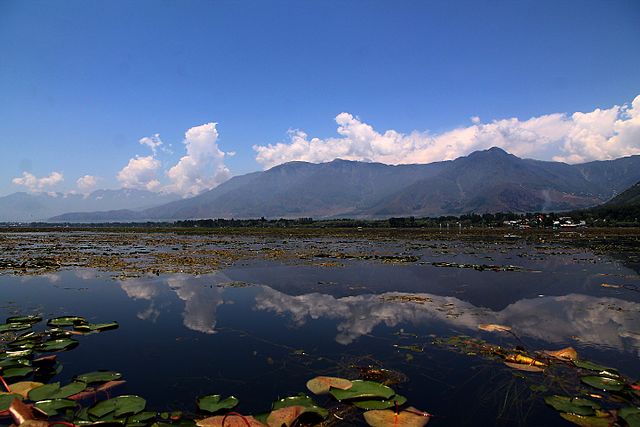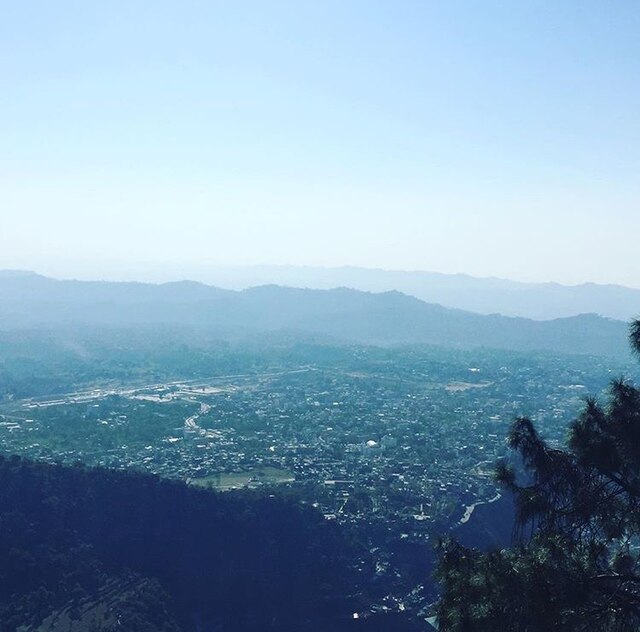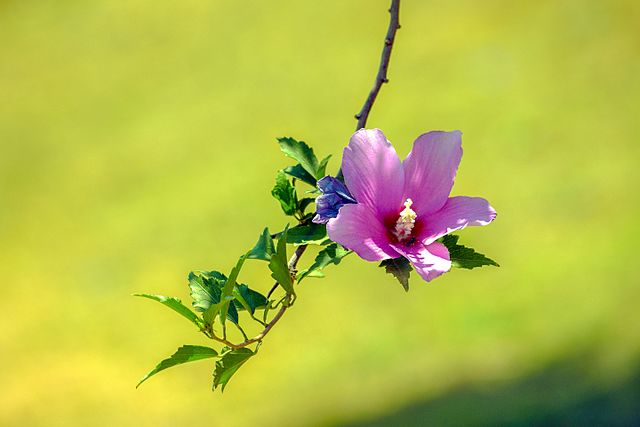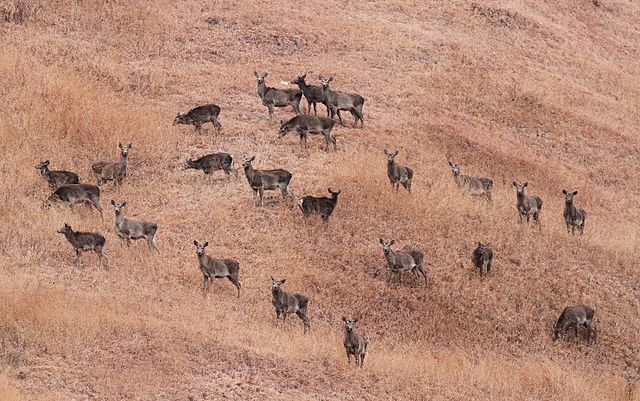Nestled in the beautiful state of Jammu and Kashmir in India, Dachigam National Park stands as a testament to the rich biodiversity and natural wonders that the region has to offer. Spread across a sprawling area, this national park is home to a wide variety of flora and fauna, making it a paradise for nature enthusiasts and wildlife lovers alike. In this article, we will explore the captivating beauty of Dachigam National Park, delving into its history, wildlife, conservation efforts, and the experiences it offers to visitors.
A Brief History of Dachigam National Park
Dachigam National Park has a rich historical background that dates back to the early 1900s. Initially, it served as a private hunting ground for the royal family of Kashmir. However, in 1951, the park was declared a game reserve and later upgraded to a national park in 1981. The name “Dachigam” translates to “ten villages,” reflecting the fact that ten villages were relocated to establish the park.
Geographic Features and Climate

Located approximately 22 kilometers from Srinagar, the capital city of Jammu and Kashmir, Dachigam National Park is situated at an altitude ranging from 1,700 to 4,300 meters. The park encompasses a diverse terrain that includes deep valleys, steep slopes, rocky outcrops, and alpine pastures. The climate in Dachigam varies with the changing seasons, with pleasant summers and snowy winters.
Flora and Fauna: A Haven for Biodiversity
Dachigam National Park boasts an incredible array of flora and fauna, making it a haven for biodiversity. The park is renowned for its vibrant floral species, including a variety of colorful wildflowers, ferns, and medicinal plants. Among the fauna, the park is most famous for its population of the endangered Hangul, also known as the Kashmir stag. Other notable wildlife species found here include Himalayan black bears, leopards, musk deer, and numerous bird species.
Conservation Efforts and Wildlife Protection

Efforts to conserve and protect the precious wildlife in Dachigam National Park have been ongoing for several decades. The park has been designated as a protected area under the Indian Wildlife Protection Act of 1972. Conservation initiatives include anti-poaching measures, habitat restoration, and public awareness campaigns. These efforts aim to ensure the long-term survival of the park’s diverse wildlife and maintain ecological balance.
Trekking and Wildlife Safari: Unveiling the Adventure
For adventure enthusiasts, Dachigam National Park offers an excellent opportunity for trekking and wildlife safaris. The park features several trekking trails that lead through breathtaking landscapes, allowing visitors to witness the beauty of nature up close. Guided wildlife safaris provide a chance to spot elusive species like the Hangul and other charismatic wildlife in their natural habitat.
Birdwatching: A Treat for Avian Enthusiasts

Birdwatching enthusiasts will be delighted by the avian wonders found in Dachigam National Park. The park is home to a wide variety of bird species, including migratory birds that visit during the summer months. As you explore the park’s lush greenery and tranquil surroundings, keep an eye out for the majestic golden eagles, colorful pheasants, and the melodious calls of various songbirds.
Photography Opportunities: Capturing Nature’s Brilliance
With its awe-inspiring landscapes and abundant wildlife, Dachigam National Park provides endless opportunities for photography enthusiasts. Capture the stunning vistas, diverse flora, and majestic wildlife through your lens. Whether you are a professional photographer or an amateur enthusiast, this national park will offer you countless frames to create unforgettable images.
Local Culture and Nearby Attractions

Beyond its natural wonders, Dachigam National Park offers a glimpse into the vibrant local culture of Jammu and Kashmir. The park is surrounded by quaint villages where you can experience the warm hospitality and traditional cuisine of the region. Additionally, nearby attractions such as Mughal Gardens and Dal Lake in Srinagar are worth exploring, adding more depth to your visit.
Best Time to Visit Dachigam National Park
The best time to visit Dachigam National Park is during the summer months, from April to October. During this period, the weather is pleasant, and the park is in full bloom, offering a picturesque setting for exploration. However, if you wish to witness the park covered in a blanket of snow, the winter months of December to February provide a unique and serene experience.
How to Reach Dachigam National Park

To reach Dachigam National Park, you can fly to Srinagar International Airport, which is well-connected to major cities in India. Alternatively, you can also reach Srinagar by train or road and then proceed to the park.
Accommodation Options: Where to Stay
Several accommodation options are available near Dachigam National Park, ranging from luxurious resorts to budget-friendly guesthouses. Some popular choices include hotels in Srinagar, which offer a wide range of amenities and easy access to the park. Camping facilities within the park premises are also available for those seeking a more immersive experience in nature.Essential Tips for Visitors
- Carry sufficient water and snacks for your visit.
- Follow the park’s rules and regulations to ensure the conservation of the environment.
- Engage the services of a local guide for a more enriching experience.
- Carry binoculars and a camera to enhance your wildlife spotting and photography endeavors.
Which Maharaja established Dachigam National Park?
Dachigam National Park was established by Maharaja Hari Singh, the last ruling Maharaja of the princely state of Jammu and Kashmir. In the early 1900s, Maharaja Hari Singh set aside a portion of the Dachigam area as a protected hunting ground to conserve the Hangul, also known as the Kashmir stag. Over time, this area evolved into what is now known as Dachigam National Park, thanks to the conservation efforts initiated by the Maharaja. The park was officially designated as a wildlife sanctuary in 1951 and later expanded to its present size.
What is Dachigam National Park famous for?
Here are some key features and attractions of Dachigam National Park:
- Hangul Conservation: Dachigam National Park is renowned for its efforts in conserving the Hangul, which is a subspecies of red deer found only in the Kashmir Valley. The park plays a crucial role in protecting and preserving this critically endangered species.
- Stunning Scenery: The park offers breathtaking natural beauty, with picturesque landscapes encompassing high mountains, deep valleys, lush meadows, and dense forests. The stunning backdrop of the Himalayas adds to the park’s charm.
- Avian Diversity: Dachigam is a haven for birdwatchers, as it hosts a wide variety of bird species. The park is home to approximately 150 bird species, including the golden eagle, black bulbul, cinnamon sparrow, Himalayan monal, koklass pheasant, and more.
- Flora and Fauna: Dachigam National Park boasts a diverse range of flora and fauna. Apart from the Hangul, it is home to other mammals like the leopard, Himalayan black bear, musk deer, and langur. The park also houses several plant species, including conifers, oaks, and various medicinal herbs.
- Trekking and Adventure: The park offers opportunities for trekking and adventure activities, allowing visitors to explore its scenic trails. Treks to destinations like Marsar Lake and Gangabal Lake are popular among adventure enthusiasts.
- Conservation Initiatives: Dachigam National Park is actively involved in conservation and preservation efforts, focusing on habitat restoration, anti-poaching measures, and community engagement. The park’s initiatives aim to protect not only the Hangul but also the overall ecosystem.
Overall, Dachigam National Park is famous for its remarkable wildlife, including the endangered Hangul, as well as its stunning natural landscapes, making it a must-visit destination for nature lovers and wildlife enthusiasts.
Which animals are found in Dachigam National Park?
Dachigam National Park is home to a diverse range of wildlife species.
- Hangul (Kashmir Stag): The Hangul, or Kashmir stag, is one of the most iconic and endangered species found in Dachigam National Park. Efforts are being made to protect and conserve this species, which is endemic to the Kashmir Valley.
- Leopard: The park is inhabited by the elusive and majestic leopard. These big cats are well adapted to the rugged terrain and dense forests of Dachigam.
- Himalayan Black Bear: Dachigam National Park is known for its population of the Himalayan black bear, a subspecies of the Asian black bear. These bears are characterized by their black fur and a distinct white V-shaped chest mark.
- Musk Deer: The park is home to the musk deer, known for its unique musk glands that produce a valuable fragrance. These small, solitary deer species are native to the high-altitude regions of the Himalayas.
- Himalayan Grey Langur: The Himalayan grey langur, also known as the Kashmir grey langur or Himalayan langur, is a species of Old World monkey found in Dachigam National Park. They are known for their gray fur and long tails.
- Red Fox: Dachigam is inhabited by the red fox, a small carnivorous mammal characterized by its reddish-brown fur and bushy tail. These foxes are primarily nocturnal and feed on a variety of prey.
- Yellow-throated Marten: The yellow-throated marten is a weasel-like carnivorous mammal found in the park. It has a slender body, dark fur, and a distinct yellow patch on its throat.
Apart from these, Dachigam National Park is also home to other species such as the Himalayan serow, Himalayan palm civet, long-tailed marmot, jungle cat, and various bird species. The park’s rich biodiversity and conservation efforts make it a significant habitat for wildlife in the region.
How many species are found in Dachigam National Park?
Dachigam National Park is home to a diverse range of species, including flora and fauna. While it is difficult to provide an exact count, the park is estimated to harbor around 20 species of mammals, 150 species of birds, and numerous species of plants and insects.
Some of the notable mammal species found in Dachigam include the endangered Hangul (Kashmir stag), leopard, Himalayan black bear, musk deer, yellow-throated marten, red fox, and Himalayan grey langur, among others.
In terms of avian diversity, the park boasts approximately 150 bird species, including the golden eagle, black bulbul, cinnamon sparrow, Himalayan monal, koklass pheasant, and various migratory birds.
The park’s flora encompasses a variety of plant species, including conifers like blue pine and deodar cedar, broad-leaved trees like oak and maple, as well as numerous medicinal herbs and shrubs.
Additionally, Dachigam National Park is also home to various reptiles, amphibians, and insect species, contributing to its overall ecological richness.
It’s important to note that these estimates are approximate, and further research and exploration may uncover additional species within the park’s boundaries.
Conclusion
Dachigam National Park, with its stunning landscapes, diverse flora and fauna, and rich cultural heritage, offers an unforgettable experience to every visitor. Whether you embark on a wildlife safari, capture nature’s brilliance through photography, or immerse yourself in the local culture, this natural wonderland will leave you in awe. Plan your visit to Dachigam National Park and embark on a journey that celebrates the beauty of the natural world.
FAQs
-
Where is Dachigam National Park located?
Dachigam National Park is situated in the union territory of Jammu and Kashmir, about 22 kilometers from Srinagar. It’s nestled in the Zabarwan Range of the Western Himalayas. -
What is Dachigam National Park famous for?
The park is most famous for being the home of the critically endangered Hangul deer, also known as the Kashmir stag. It’s also known for its beautiful landscape, dense forests, and rich biodiversity. -
What is the best time to visit Dachigam National Park?
The best time to visit is from April to October. During this period, the weather is pleasant, and wildlife sightings are more frequent. For snow lovers, winter visits (December–February) offer a completely different, snowy experience. -
Do I need permission to visit Dachigam National Park?
Yes, prior permission is required from the Wildlife Department in Srinagar. Since it’s a protected area, the park has restrictions to ensure wildlife conservation. -
Can I spot a leopard or bear in the park?
Absolutely! Dachigam is home to Himalayan black bears, leopards, and even elusive snow leopards in higher altitudes. However, sightings depend on timing, luck, and a bit of patience.


